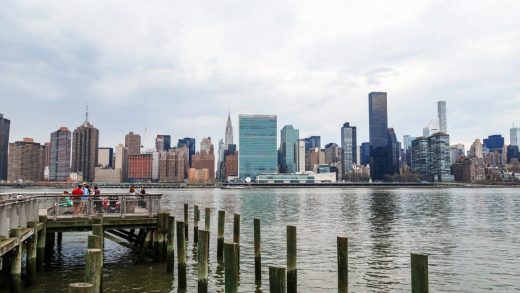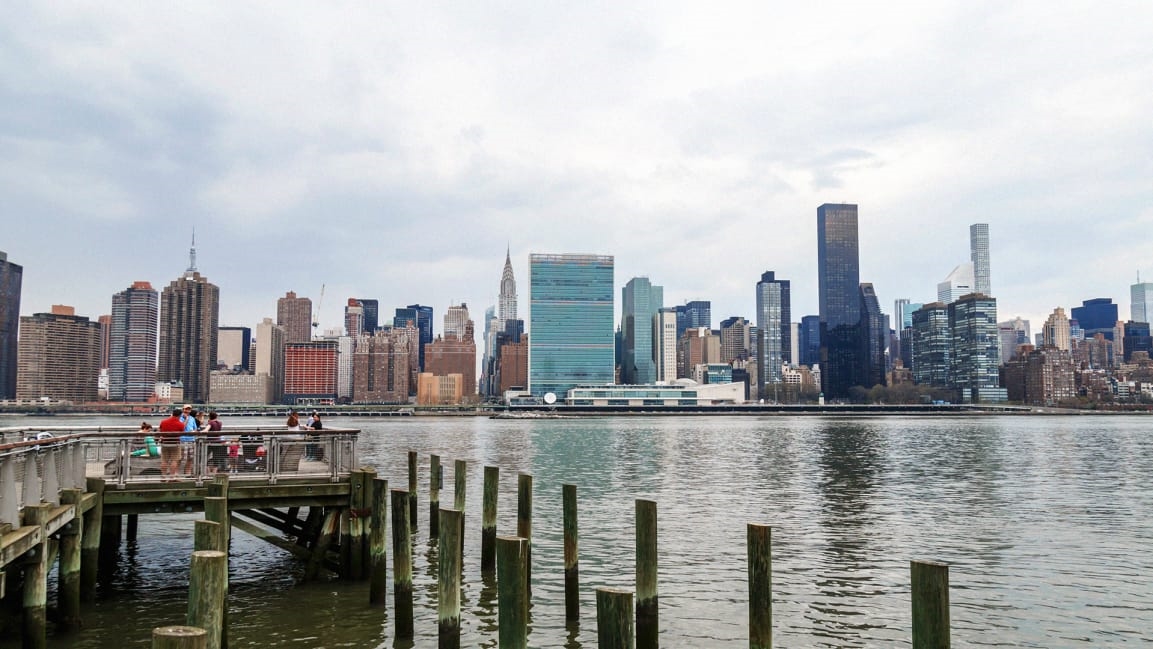The Amazon deal is even worse than it looks and will cost NY more than it thinks
Amazon’s decision to locate two new “headquarters” in Long Island City in Queens, New York and Crystal City in Arlington, Virginia has already provoked a firestorm of outrage, especially over the news that tax breaks and other subsidies for the sites will exceed $4.6 billion.
That makes it the fourth-costliest megadeal in U.S. history, just behind the Foxconn deal in Wisconsin (which is melting down and may never qualify for many of its tax breaks).
Voices as disparate as the Koch brothers-backed Americans for Prosperity and Democratic Socialist Representative-elect Alexandria Ocasio-Cortez have denounced the incentive deals and called for no subsidies to a company headed by the world’s richest person.
The costs are high, both in absolute terms and on a per-job basis, contrary to Amazon’s artful spin. In a classic example of cost-benefit apples and oranges, citing only one New York State incentive, Amazon said the sum “equates to $48,000 per job for 25,000 jobs with an average wage of over $150,000…” Of course, wages cannot be compared to tax breaks since employees pay only a small percentage of their salaries as taxes to offset the tax breaks. And the cost per job in New York is actually at least $112,000–and that is not a full accounting.
Oddly, Amazon’s own press release includes information about its economic development incentives. Such information normally comes only from governors or mayors. It suggests Amazon is trying hard to control the narrative about the cost-benefit numerator, i.e., to minimize the perceived subsidy costs while maximizing the benefits.
Minimizing the costs and maximizing the benefits
Indeed, besides the cost-benefit sleight of hand, the company’s press release mentions but fails to price-tag three large New York subsidies. One is the Relocation and Employment Assistance Program. REAP gives companies a per-employee tax credit of $3,000 per year for up to 12 years, and Amazon projects hiring 25,000 employees. Accordingly, the New York City press release puts the REAP cost at $897 million.
Amazon also downplayed the city’s Industrial & Commercial Abatement Program (ICAP), which, like REAP is an “as of right,” or automatic subsidy that a company receives simply by performing an eligible activity. ICAP partially abates property taxes for up to 25 years, an enormous subsidy if Amazon builds $3.6 billion worth of space, as projected. The City estimates the ICAP subsidy at $386 million.
New York is also granting Amazon a Payment in Lieu of Taxes, or PILOT. Akin to a tax increment financing district, some of Amazon’s property taxes will be diverted away from the city’s general fund and instead be used to enhance the project area, further enhancing Amazon’s property value. Neither Amazon’s statement nor the City estimated the value of this subsidy, which could also reach nine figures.
Separately, the state award under the Excelsior program is projected at $1.525 billion to $1.7 billion.
Also unstated: The Long Island City project site is in an Opportunity Zone (a new federal giveaway hidden in Trump’s tax bill). So high-net-worth individuals who have large unrealized capital gains (e.g., long-term Amazon shareholders) can invest in the project and avoid federal capital gains tax. We have no estimate of this cost. In Virginia, both of Arlington’s Opportunity Zones are close to the Amazon site.
The Amazon press release also failed to mention an entire new campus close to its Arlington site, announced on HQ2 day by Virginia Tech University and Gov. Ralph Northam. It will cost $1 billion and “was part of the higher education package affiliated with the proposal that led to the selection of Crystal City in Northern Virginia as one of the two new Amazon headquarters locations,” according to Virginia Tech’s press release.
(UPDATE: A rep for Virginia Tech sent the following statement to clarify its role: “The university and the state both committed to provide $250 million to seed the Virginia Tech Innovation Campus. The remaining funding model requires private philanthropy, industry partnerships, and the creation of other revenue streams by leveraging the innovative shared spaces of the campus plan. The buildout for the $1 billion campus is expected to take 10-15 years and more than half of that money is expected to come from non-public funds.”)
These four omissions alone–REAP, ICAP, PILOT and the Virginia Tech campus–push the taxpayer costs of the two deals to above $4.6 billion, and we expect more such costs will be disclosed.
A cynical ploy to gin up pressure for more tax breaks
New York also states that $2.4 billion in infrastructure improvements had recently been announced in Long Island City.
Big picture: Amazon‘s decision looks like textbook Site Location 101 and a teachable moment about the zero-sum “economic war among the states.” To no surprise, Amazon chose two deep pools of executive talent and political power: the nation’s financial capital and its government capital. The 238-city competition clearly looks to have been a cynical ploy to gin up pressure for more tax breaks on the finalist cities and states.
The Virginia location is very close to the Pentagon and not far from the Central Intelligence Agency, two of its most profitable cloud-computing clients. And as Prof. Scott Galloway has noted, Amazon’s three headquarters will be an average of just 6.4 miles from CEO Jeff Bezos’s three residences.
The cities making the biggest known subsidy offers did not win the deal: Montgomery County, Maryland at $8.5 billion; St. Louis at $7.3 billion; or Newark at $7 billion. But the pressure of those and other big subsidy offers helped Amazon once again get paid to do what it apparently would have done anyway.
The same is true of $1.6 billion in subsidies it has gotten to build data centers and warehouses, even though it must have such facilities to fulfill its cloud-computing and Prime business plans.
I urge the 235 places that “lost” HQ2, to disclose their first-round bids for HQ2. They are not covered by non-disclosure agreements. You put enormous amounts of time and money into developing these proposals and now they should be repurposed. Toronto disclosed its proposal long ago; it has been downloaded 17,200 times and has helped attract other tech employers.
We are also seeing a new flow of such disclosures. For example, Pennsylvania finally capitulated to Freedom of Information litigation and disclosed elements of its offer made in support of Pittsburgh and Philadelphia. As we’d opined recently, the state’s offer included a “paying taxes to the boss” subsidy–of $4.5 billion!–in which Amazon would have kept some of the HQ2 employees’ state personal income taxes, presumably without the employees’ knowledge or consent.
Incredibly, the Pittsburgh bid has also just been disclosed: It was valued at $9.4 billion, making it the largest bid yet revealed–but we have many more to go!
Jeff Bezos is disrupting the economic development tax-break-industrial complex, but not in a way Corporate America may appreciate! Will blowback against his naked grab finally change the game? Stay tuned!
This story has been updated.
Greg LeRoy directs Good Jobs First and is author of The Great American Jobs Scam.
(28)



